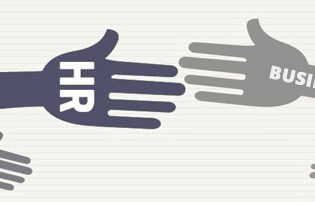
You will find this question very common among aggressive sales-driven organisations. But, there is logic in asking this question in the face of it. Why should the organisation spend time, effort, and money on resources that will not stick with the organisation?
If you step back; take a deep breath; shed your jaundice (prejudice) glasses, if you are aware of wearing one, and take a broad look at any business; you will find that these frontline resources are the face of the business. However, if these resources are not well equipped, no matter how big the brand is, you wouldn’t avoid building negative perceptions about your organisation.
What is the meaning of employee attrition?
Employee attrition refers to the loss of staff from any organization for various reasons. Companies lose money when they let go of talented employees who would be valuable additions to other organizations. Attrition also hurts morale. Attrition happens for several reasons: job dissatisfaction, poor performance, lack of opportunities, etc. Employees who feel valued and cared for tend to work harder and give more significant effort. So the best way to keep your workforce engaged and motivated is to treat them well.
What is the importance of employee retention?
Employee retention is essential for any business. As most businesses grow, they often expand their staff, which means that new employees must be trained to do their job correctly. When a company grows, the management usually wants to keep all of their current employees at the same pace and don't want to replace them. However, the management also doesn't want to lose their valuable customers. Therefore, they hire new employees to retain their existing clients. As a result, employee retention leads to higher profit margins and less turnover costs.
What are employee retention strategies?
Employee retention strategies include all of your actions to keep your employees working for you. These actions may include compensation plans that reward exceptional performance, flexible work schedules, and job security. The bottom line is that you want to give your employees reasons to stick around so they can continue doing what makes them successful.
What is employee attrition rate?
Employee attrition rates are determined by comparing new hires with current employees. When businesses lose experienced workers, they often need to hire new employees at a higher salary level to offset losses in productivity. Many business owners believe that hiring talented individuals from outside sources such as universities is one way to reduce these costs. However, when they do so, they may miss out on the loyalty of a highly skilled team member who has been working for the company for many years.
The employee retention rate is calculated using a ratio of the total number of employees who left the company minus the total number of new hires divided by the total number of employees at the beginning of the year. This calculation helps determine how well the company has done at retaining employees.
What are the different types of employee attritions?
There are four types of employee attrition: voluntary, involuntary, termination, and retirement. The most common forms of attrition are voluntary and involuntary. Voluntary attrition occurs when someone leaves for personal reasons. Examples include taking time off work, leaving to start a family, or becoming ill. Involuntary attrition happens when an individual quits his job due to circumstances outside of their control, such as downsizing, layoffs, or poor performance. Termination is when an employer fires someone from their role. Finally, retirement means voluntarily resigning from one's current position to pursue other interests.
How is talent retention strategy different from employee retention strategy?
A talent retention strategy is based on keeping your best employees. Employee retention strategies focus on retaining existing staff members. This usually means making sure they're fairly compensated, given opportunities for advancement, have a great work environment, etc. The critical difference between these two strategies is that while talent retention strategies involve attracting top talent, employee retention strategies focus on retaining current employees.
What are the benefits of employee retention?
Employee retention has three main benefits: 1.) lower attrition rates 2.) higher productivity, and 3.) reduced training costs. Employees who are satisfied with their jobs tend to stay longer and perform better at work. On average, workers leave their jobs for personal reasons, not because they want to be promoted or change positions.
What are the ways to manage attrition?
Attrition management is defined as having a plan in place to reduce employee turnover. Turnover leads to high costs for training new hires, recruiting, and retaining top talent. The best way to keep employees from leaving your company is to treat them well, give them opportunities to advance, provide feedback regularly, and offer promotions when they deserve it.
What are the objectives of employee retention policies?
Employee retention policies aim at retaining current workers and attracting new ones. Some businesses use these policies for training purposes since they allow learning about specific topics from experienced professionals. Other times, they may be used to ensure that workers don't leave on bad terms. There is no one best method of employing employee retention policies; each business has different objectives, which should factor into how they implement them.







